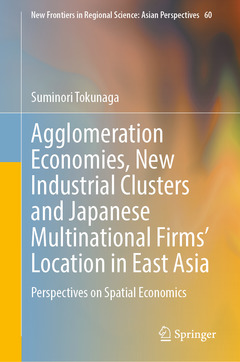Description
Agglomeration Economies, New Industrial Clusters and Japanese Multinational Firms’ Location in East Asia, 2024
Perspectives on Spatial Economics
New Frontiers in Regional Science: Asian Perspectives Series, Vol. 60
Language: English
Subjects for Agglomeration Economies, New Industrial Clusters and...:
614 p. · 15.5x23.5 cm · Hardback
Description
/li>Contents
/li>Biography
/li>Comment
/li>
Suminori Tokunaga, the president of the Japan Section of Regional Science Association International (JSRSAI) for 2021–2022, is Professor of Regional Economics in the Faculty of Economics and Business Administration at Reitaku University, Kashiwa, Chiba, Japan. He is also Professor Emeritus at University of Tsukuba, Tsukuba, Japan, and formerly Professor of Economics in the Faculty of Life and Environmental Sciences at University of Tsukuba, Japan. He is the author or co-author of three books: Landownership and Residential Land Use in Urban Economies (1996, Springer-Verlag Tokyo); Model Analysis of Automobile Environmental Policy (2008, Bunshindo, Tokyo, in Japanese); and Spatial economic modelling of megathrust earthquake in Japan (2017, co-authored with Budy P. Resosudarmo, Springer Nature Singapore, Singapore).
These books may interest you

Agglomeration and Firm Performance 158.24 €

Agglomeration and Firm Performance 158.24 €


